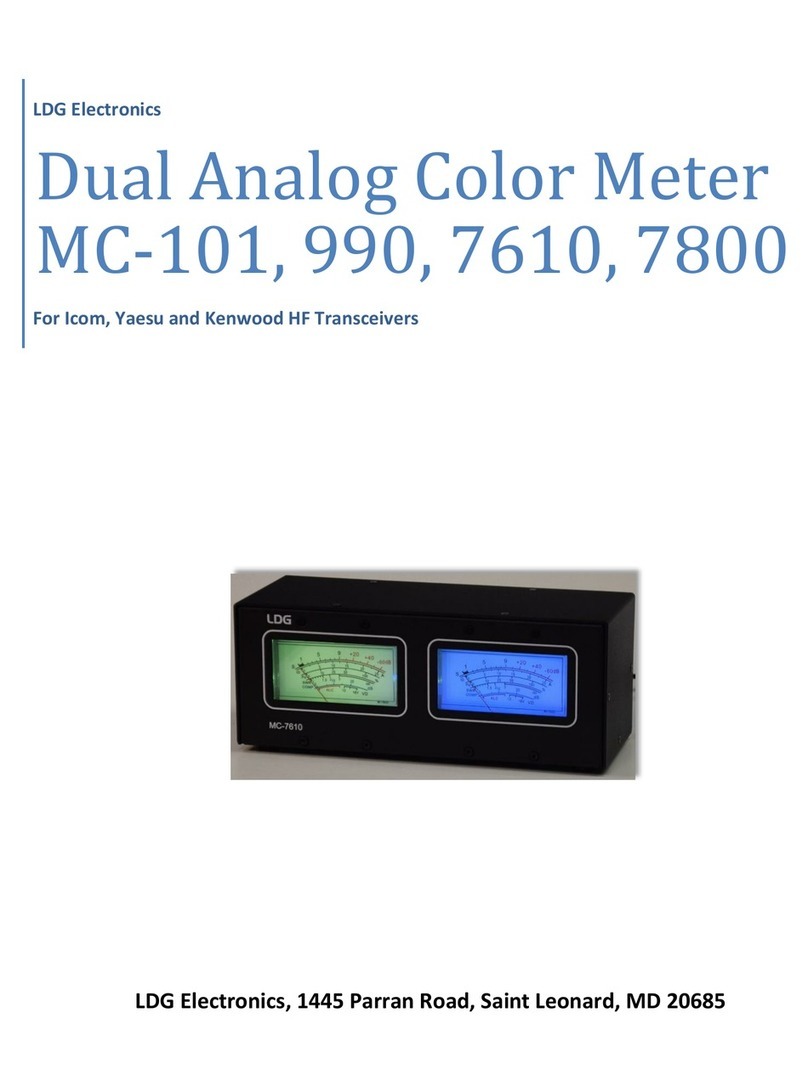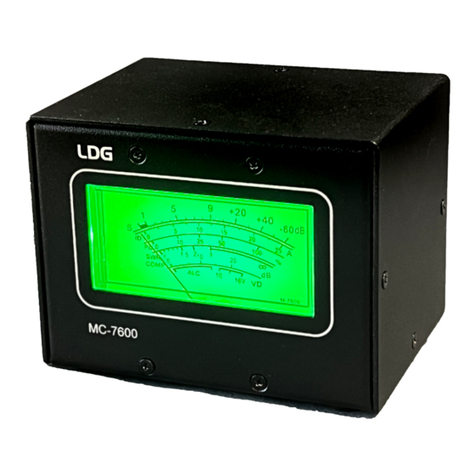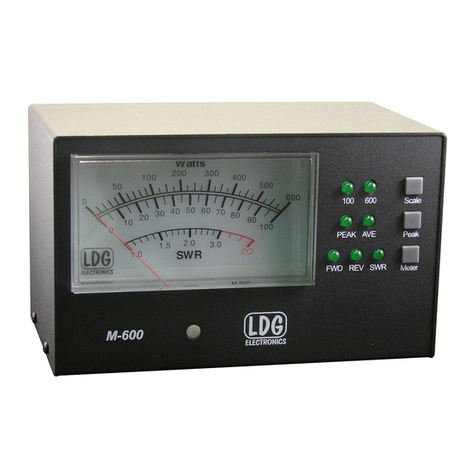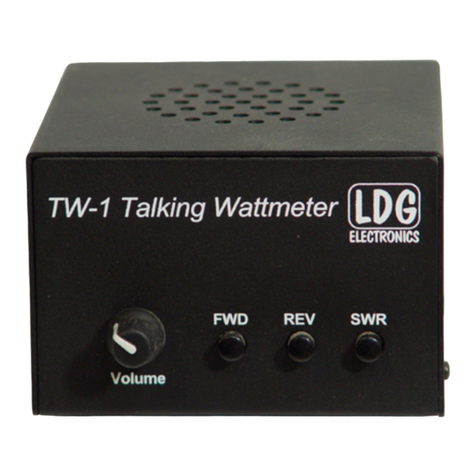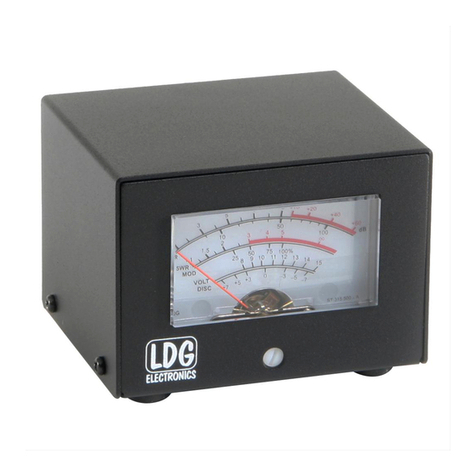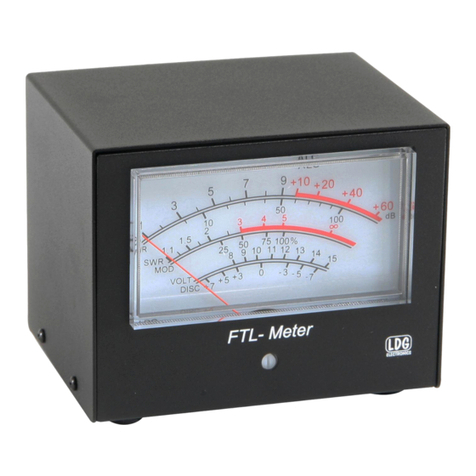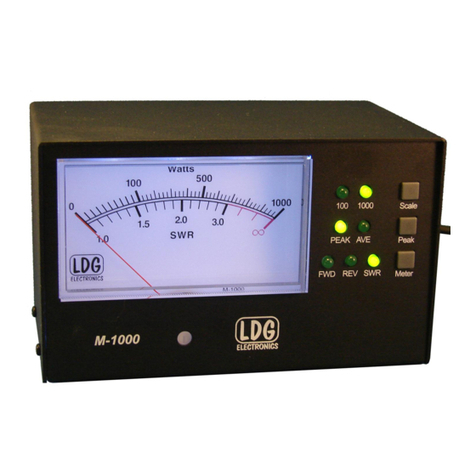
10
Care and Maintenance
Your TW-1 tuner is essentially maintenance-free; just be sure to observe the power and voltage
limits discussed in this manual. The outer case may be cleaned as needed with a soft cloth slightly
dampened in a mild household cleaning solution. As with any modern electronic device, your
TW-1 can be damaged by temperature extremes, water, impact or static discharge. LDG strongly
recommends that you use a good quality, properly installed lightning arrestor in the antenna lead.
You should never have to remove the cover, but if you do, be sure that no wires are within 2" of
the SWR sensor or the SO-239 connectors when you reassemble the unit.
Technical Support
We are happy to help you with your TW-1. Telephone technical support is available at 410-586-
2177 weekdays from 9am to 5pm Eastern Time. Inquiries by Fax at 410-586-8475 are welcome,
Warranty and Service
Your TW-1 is warranted against defects in parts or workmanship for two years from purchase.
The warranty does not cover damage due to abuse or exceeding specifications. This warranty
applies to the original purchaser only; it is not transferable. A copy of the receipt showing the
purchaser’s name and the date of purchase must accompany units returned for warranty service.
All returns must be shipped to us pre-paid; we will not accept units with postage due. A return
form is provided on our web site for your convenience.
If you need to return your TW-1 to us for service, package it carefully, keeping in mind that we
will re-use your packaging to return the unit to you. A self-addressed return-shipping label, while
not required, will help insure speedy and accurate delivery of your repaired unit. Include a full
description of the problem, along with your name, address and a phone number or e-mail address
where we can reach you with any questions. Repairs average about 3 to 6 weeks.
We will be glad to service your TW-1 after the warranty period has ended. We will notify you of
repair charges by phone or e-mail, and bill you after repairs are completed.
Feedback
If you have an idea to improve our software or hardware, please send us a description. If we
incorporate your idea in the TW-1, we'll send you a free upgrade as a “thank you”.
We encourage everyone who uses the TW-1 to contact us (card, letter or e-mail preferred) telling
us how well it works for you. We are also always looking for photographs of our products in use;
we frequently place such pictures on our Web site (www.ldgelectronics.com).













